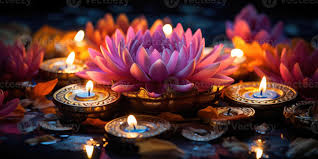
Deepavali Lakshmi Puja is one of the most auspicious and widely celebrated Hindu rituals, dedicated to Goddess Lakshmi, the goddess of wealth, prosperity, and well-being. It is performed on the third day of the Deepavali festival, which is one of the most important festivals in India. Deepavali, also known as Diwali, marks the victory of light over darkness and good over evil. On this day, devotees worship Goddess Lakshmi to seek her blessings for wealth, prosperity, health, and happiness in the coming year.
The puja begins by cleaning the house and decorating it with rangolis, torans (door decorations), and diyas (oil lamps), symbolizing the removal of darkness and the welcoming of light. The home is adorned with colorful lights and flowers, creating a festive atmosphere.
A statue or image of Goddess Lakshmi is placed on a clean altar, usually along with an idol or image of Lord Ganesha, as he is believed to remove obstacles. The worshippers then light diyas or oil lamps around the altar to symbolize the victory of light. Incense sticks and candles are also lit to purify the environment.
Devotees offer flowers, fruits, sweets (such as laddus or pedas), and coins to Goddess Lakshmi as a symbol of wealth and prosperity. The Kalasha Sthapana (placing a sacred pot with water, mango leaves, and a coconut) is often performed to invite divine blessings into the home.
The chanting of Lakshmi Ashtakshara Mantra (“Om Shreem Hreem Shreem Maha Lakshmaye Namah”) and Lakshmi Stotra invokes the goddess’s blessings for abundance and financial stability.
The puja concludes with the Aarti, and prasadam is distributed to family and friends. Deepavali Lakshmi Puja not only seeks material prosperity but also spiritual growth, peace, and happiness.

